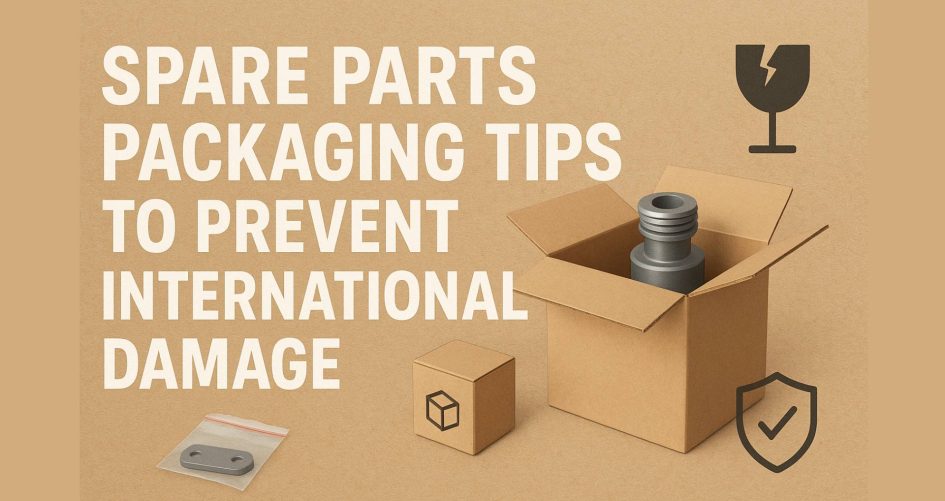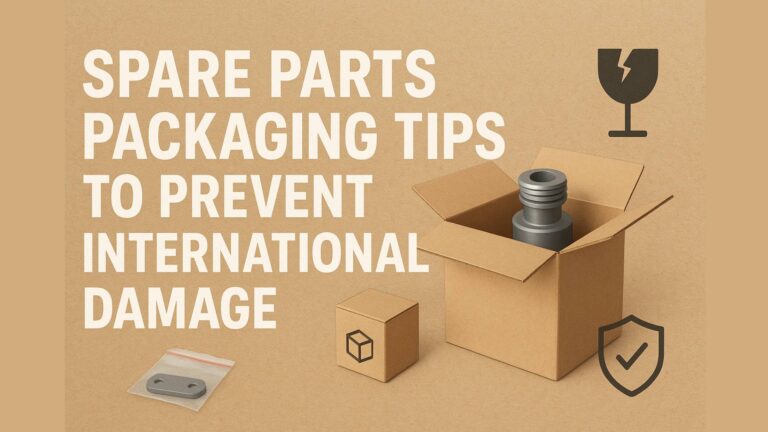When shipping delicate phone components overseas, proper packaging can be the difference between a satisfied customer and an expensive return. Whether you’re sending replacement screens, batteries, or other sensitive electronics, following the right parts packaging tips, using a professional export packaging guide, and focusing on mobile part protection will safeguard your shipments from physical shocks, moisture, and other hazards during transit. In this article, we’ll cover everything from material selection to labeling practices so your spare parts arrive intact—every time. Know more.
1. Why Packaging Matters in the Mobile Spare Parts Industry
Global demand for refurbished and replacement mobile parts has skyrocketed, but so has the risk of shipping damage. Without proper mobile part protection, even the highest-quality product can arrive scratched, cracked, or completely unusable. The stakes are high:
- Damaged goods lead to return costs and lost profits.
- Poor packaging affects your business reputation.
- Customs inspections can delay or reject shipments if your export packaging guide isn’t followed.
By implementing proven parts packaging tips, you reduce these risks and keep your business running smoothly.
2. Understanding International Shipping Risks
International shipments face multiple hazards, making mobile part protection a top priority:
- Rough Handling – Packages are moved through conveyors, forklifts, and manual handling in warehouses.
- Stacking Pressure – Heavier boxes may crush lighter ones.
- Vibration – Long journeys on trucks or ships can cause parts to rub or shift.
- Moisture & Temperature Changes – Condensation and extreme heat/cold can damage sensitive components.
A solid export packaging guide considers all these factors, ensuring your goods survive from factory to final destination.
3. Choosing the Right Packaging Materials
Material choice is the foundation of effective mobile part protection. Here are the essentials:
- Bubble Wrap & Foam Inserts – Cushioning layers absorb shocks.
- Anti-Static Bags – Prevent static discharge that can harm electronics.
- Corrugated Boxes – Double or triple-wall cardboard for maximum strength.
- Waterproof Seals – Plastic wraps or tape to guard against moisture.
These parts packaging tips apply to both small and bulk shipments, with each layer playing a role in preventing transit damage.
4. Inner Packaging: Protecting Each Component
Before a part goes into a shipping box, it needs its own mobile part protection:
- Screen Protectors – Adhesive films or hard covers for LCDs and touchscreens.
- Foam Edge Guards – Ideal for corners of displays.
- Individual Boxes – For fragile items like camera modules or batteries.
Following this step-by-step export packaging guide ensures that even if the outer box is damaged, the inner packaging absorbs the impact.
5. Outer Packaging: Shielding Against the Unexpected
Your outer packaging is the first and last line of defense.
Parts packaging tips for outer protection include:
- Using sturdy, double-wall boxes for heavy parts.
- Avoiding oversized boxes that allow items to shift.
- Sealing with industrial-grade packing tape.
- Wrapping in stretch film for pallet shipments.
A professional export packaging guide also suggests adding corner protectors for stacked shipments.
6. Labeling for Safe International Transport
Labels communicate handling instructions to shipping staff. For effective mobile part protection:
- Use “Fragile” and “Handle with Care” labels in multiple languages.
- Apply “This Side Up” arrows to prevent incorrect positioning.
- Include moisture-sensitive warning labels for electronics.
These parts packaging tips not only prevent mishandling but also help speed up customs clearance.
7. Customs and Compliance Considerations
International shipping is more than just packaging. A proper export packaging guide includes compliance with:
- Import/export regulations for electronics.
- Dangerous goods declarations for batteries.
- CE and RoHS marking requirements for mobile components.
Proper documentation ensures your mobile part protection efforts aren’t wasted due to customs rejections.
8. Packaging Different Types of Mobile Parts
Not all spare parts are created equal. Tailor your parts packaging tips to the component type:
- LCD Screens – Anti-scratch films, foam layers, and rigid boxes.
- Batteries – Insulated terminals, anti-static wraps, and UN-certified packaging.
- Motherboards – Anti-static shielding bags, foam padding, and moisture barriers.
- Camera Modules – Individual foam compartments and shock-absorbing inserts.
Your export packaging guide should address each category with its own set of rules for maximum mobile part protection.
9. Best Practices for Bulk Shipments
When shipping large quantities:
- Stack boxes on pallets for stability.
- Use shrink wrap for weather resistance.
- Distribute weight evenly to prevent tipping.
- Follow parts packaging tips that prevent vibration damage, like adding pallet cushions.
Bulk shipping without a structured export packaging guide can result in widespread losses if one pallet fails.
10. Sustainable Packaging Solutions
Eco-friendly packaging can still offer strong mobile part protection:
- Recyclable cardboard and biodegradable cushioning.
- Reusable anti-static pouches.
- Water-based adhesives instead of chemical-heavy tapes.
Many customers now look for green shipping practices, making sustainability a smart addition to your parts packaging tips.
11. Training Your Packing Team
Even the best export packaging guide fails without proper execution. Train your staff to:
- Use correct materials for each part.
- Follow weight and size limits for boxes.
- Apply mobile part protection consistently.
- Inspect packaging before sealing.
Quality control at this stage reduces costly rework and returns.
12. Final Pre-Shipment Checklist
Before dispatching your order, confirm:
✅ Correct packaging materials were used.
✅ Inner and outer packaging follow parts packaging tips.
✅ Labels are accurate and visible.
✅ Documentation complies with your export packaging guide.
✅ Mobile part protection measures meet international standards.
Conclusion
International shipping doesn’t have to mean high damage rates. By following parts packaging tips, adhering to a proven export packaging guide, and prioritizing mobile part protection, you ensure your products arrive in perfect condition, protect your bottom line, and maintain customer trust. Whether you’re sending one screen or a container full of components, smart packaging is an investment that always pays off. Know more.





